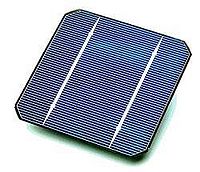The Photovoltaic Effect
CLAIMED BY AKRESSES99
The photovoltaic effect is the creation of electric current or voltage through a material upon exposure to light. It is a physical and chemical phenomenon in response to the transfer of energy from photons.

The Main Idea
The photovoltaic effect is directly related to The Photoelectric Effect, but they are different processes. When light strikes a material surface, the electrons present in the valence band absorb the energy from the photons energy and, being excited, jump to the conduction band and become free. The material is composed of crystallized atoms that are ionized and create an electric imbalance, that drives the electrons. These highly excited electrons diffuse and some reach a junction where they are accelerated into a different material by an electrode. This generates an electric current, so some of the light energy can be converted into electric energy. This current can then be used to power an appliance.
